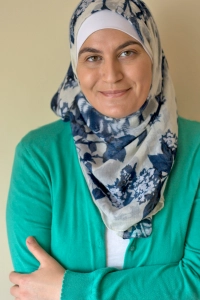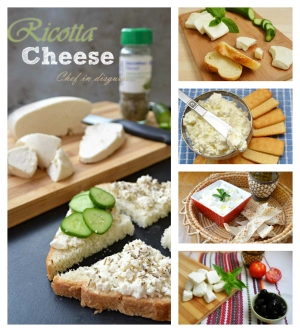Ftoot is a type of bread popular in Palestine. The name ftoot means crumbled and it refers to the crumbled cheese infused through out the bread.
Last year, when I shared the Nabulsi recipe for ftoot ,I promised that I’d share my mum’s recipe for ftoot which is my go to recipe for this bread and it is a little different from the Nabulsi version. Well I’m finally doing that today 🙂 but before I do, allow me to take you on a little trip
I told you in my previous post that we were planning a road trip. Since Eid was on Wednesday we had a long weekend and we decided to take the kids on a road trip to Abu Dhabi the capital of the UAE.
Abu Dhabi is about 270 km from Ras Al Khaima and since the kids and I have never been to it during our 2 year stay in the UAE, we were really looking forward to the trip.
Abu Dhabi -like Dubai and most major cities in the UAE- is famous for its modern sky scrappers ,shopping mega-centers and themed amusement parks and though all of that was fun to visit, the part I enjoyed the most in our 3 day trip was our visit to the city of masdar (the eco friendly city of the future) and our tour in the Sheikh Zayed grand mosque which is a true architectural master piece.
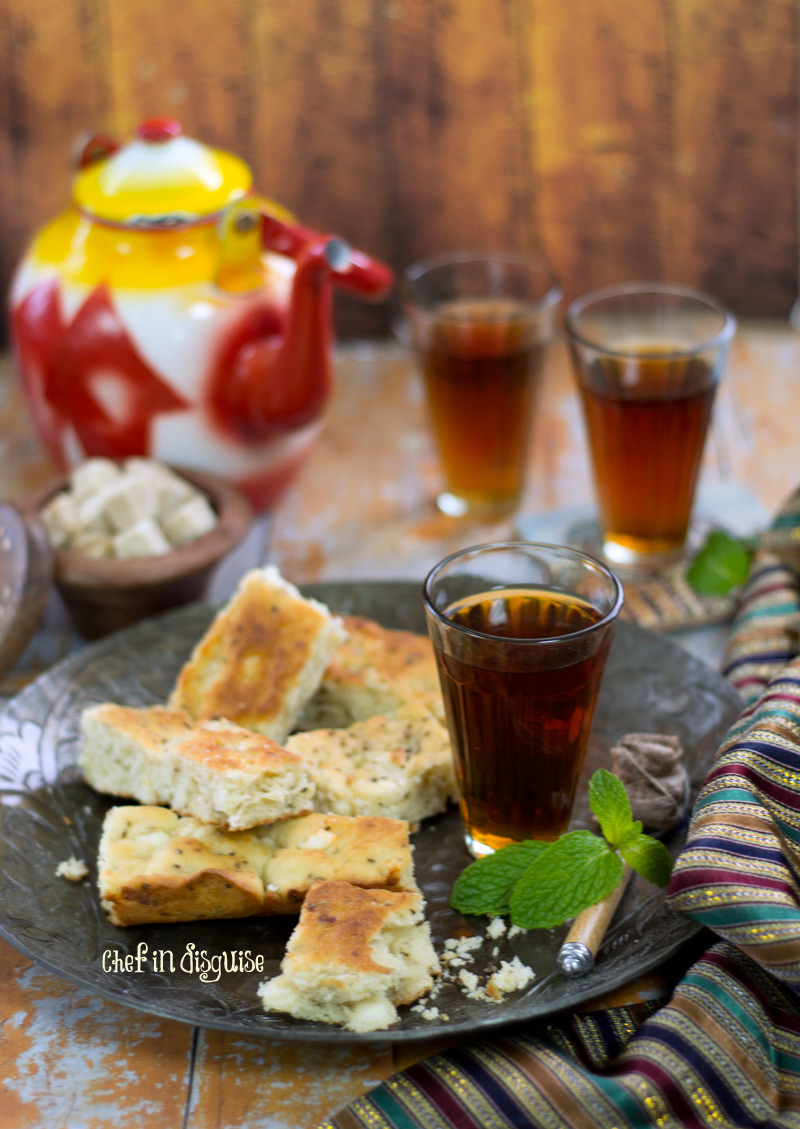
Masdar city is the emirate’s vision of a city of the future. With the goal of becoming the world’s most sustainable eco-city.There were so many things to see and try and the kids loved every minute of it.
When you get to Masdar you have to park your car outside as cars are banned within the city. You can walk, use a bicycle (they are readily available near the city’s entry) or you can ride in the Personal Rapid Transport (PRT) pods . They are small unmanned electric cars that take you in a short trip around the city. This was actually the kids’ favorite part.
When I was reading up on the city before our visit, the part about walking around really worried me. In the UAE summer is brutal to say the least and it was expected to be 42 C on the day of our visit but when we got there, we actually managed to walk around and explore without melting.
How? you may ask
Well the answer lies in a combination of cutting edge technology with ancient Arabic architectural techniques .
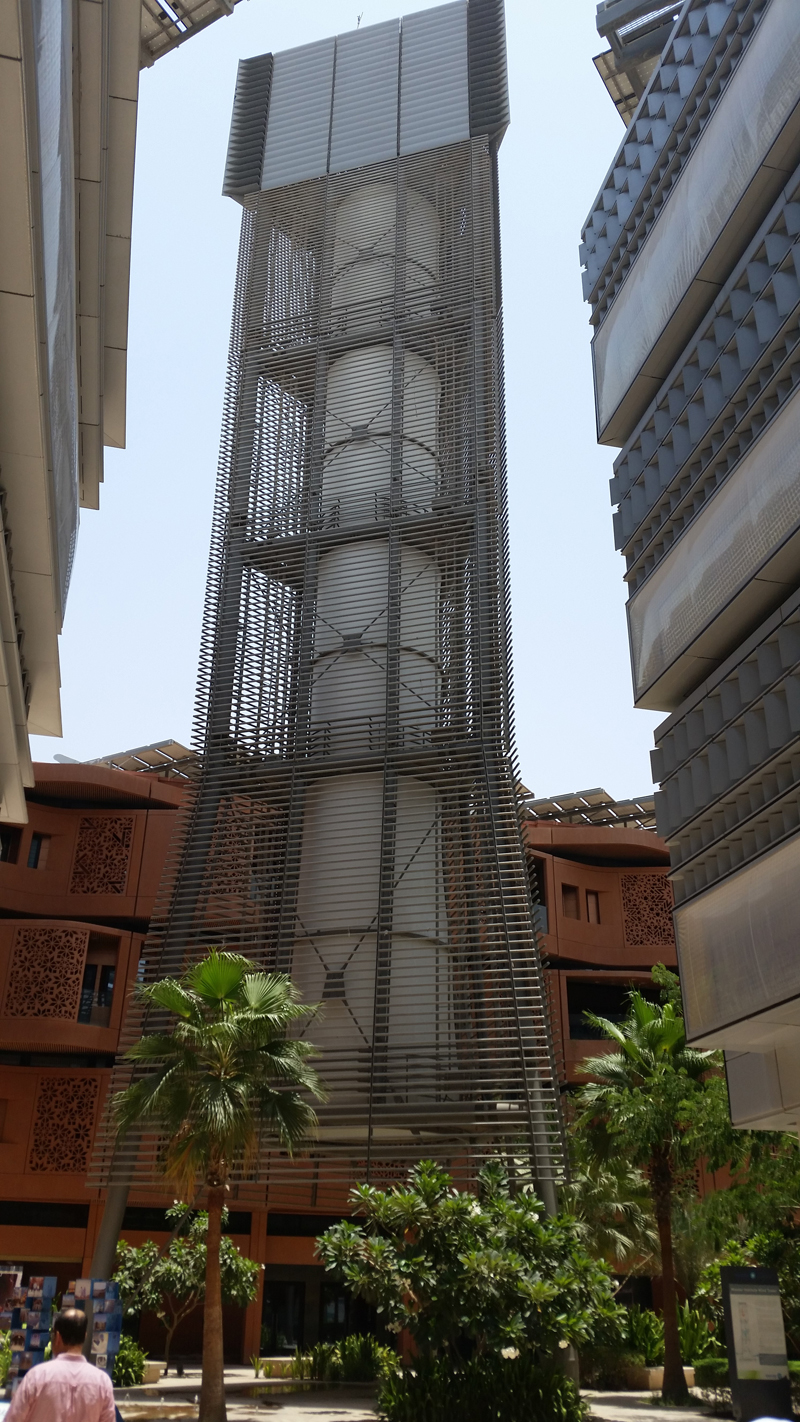
Masdar is built around a huge central wind tunnel that channels a cooling breeze through the streets and alleys making it manageable to stroll around even during high summer temperatures. The wind tower is based on the barjeel an old architectural feature that was popular in the old buildings in the UAE. The science behind it is very simple yet effective. The tower directs the wind from the cooler upper levels to the hotter lower levels and during its downward trip it is cooled down even further by mist generators.
Added to that the whole city is planned in a way that the buildings, streets and walk ways are directed in a pattern to maximize air flow and minimize direct sun exposure while providing enough light (most streets run in a south to north direction)
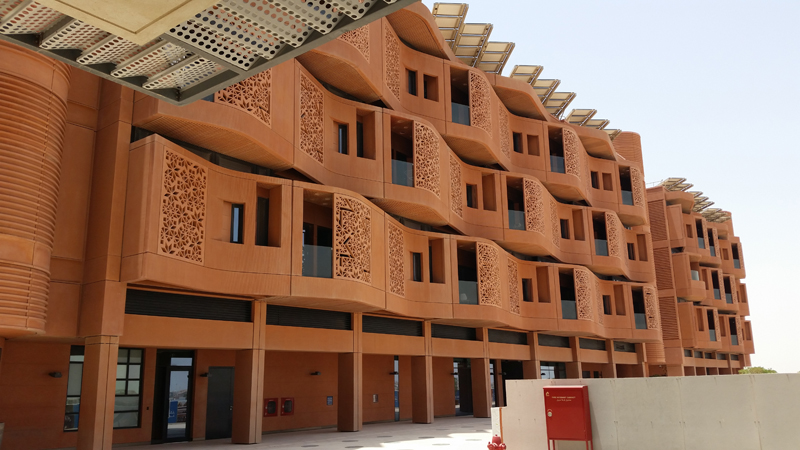
Another beautiful example of Masdar’s take on technology meets tradition is the residential buildings. They use another traditional Arabic architectural theme, Mashrabiya screens. Mashrabiyas are traditional screens usually made out of wood that is cut in beautiful patterns. Their function is to allow the air and sunshine to pass through yet providing privacy to the house’s residents. In masdar they use glass reinforced concrete (GRC) and 90% recycled aluminum to achieve the same effect.
Masdar (which means source in Arabic)gets its name because it uses alternative sources of energy, namely: wind power, wave power and sun power to generate clean energy. The sun’s power is harnessed through rooftop solar panels that are present on every building in the city. Masdar also boasts having one of the largest photovoltaic (solar cell) installations in the Middle East.
Despite the fact that the city is far from complete,It was truly a fun and educational tour. The kids got to see and experience new things and I love it when we can combine fun and education in any activity
My second favorite destination was the Sheikh Zayed Grand Mosque.
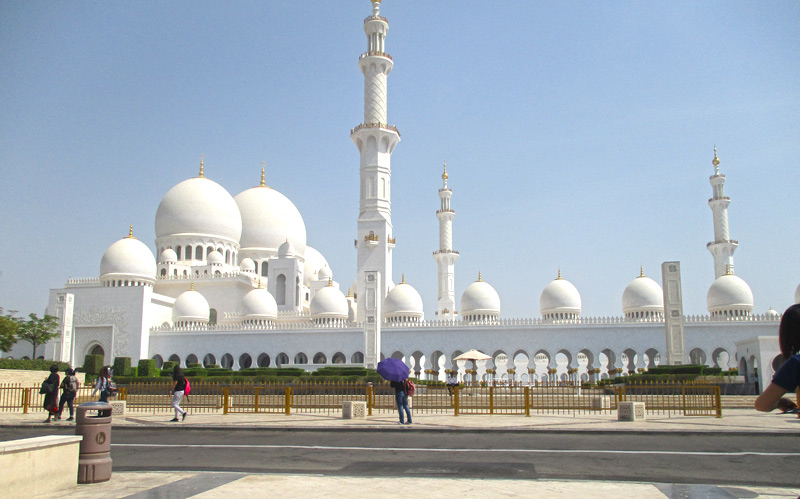

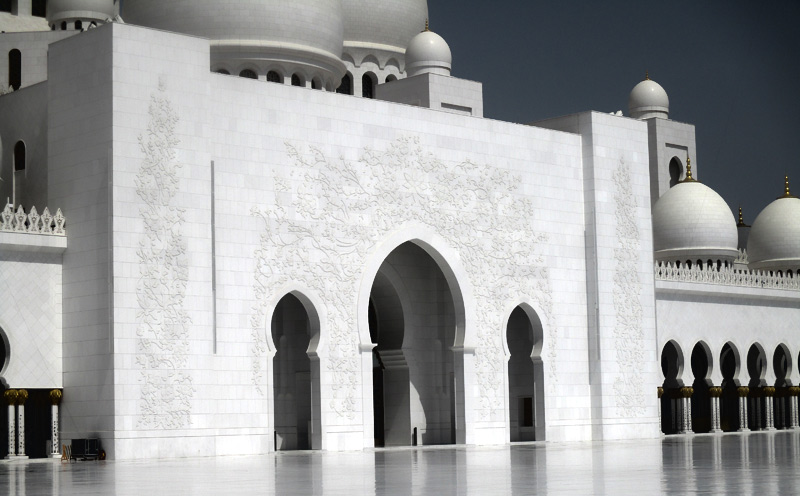
This architectural work of art features 82 domes, over a 1,000 columns, 24 carat gold gilded chandeliers and the world’s largest hand woven carpet.
Impressive numbers aside,What I loved the most was the floral theme that ran through the entire mosque. There were flower decorations every where you looked: on the walls, marble floors, doors, carpets and chandeliers (if you stand directly under the chandeliers and look up they look like flowers in full bloom!).
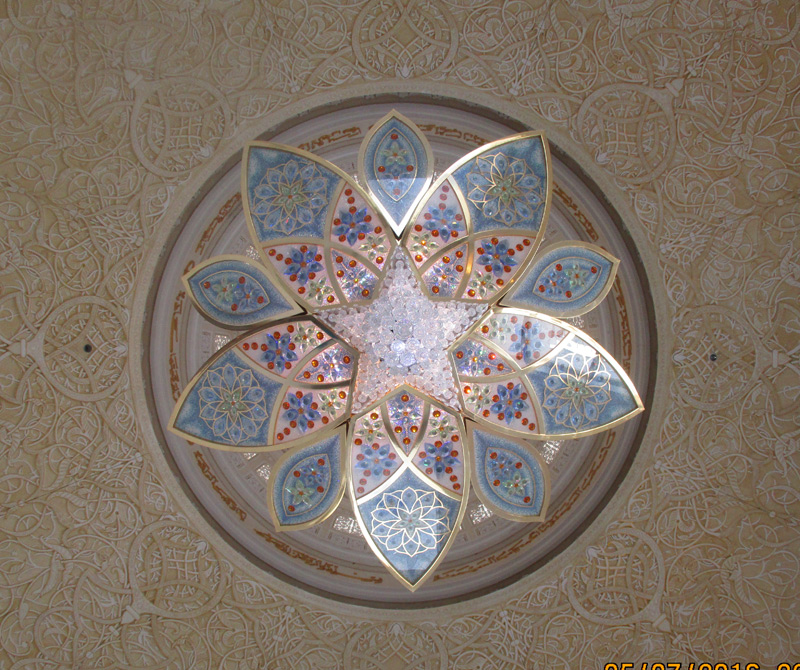
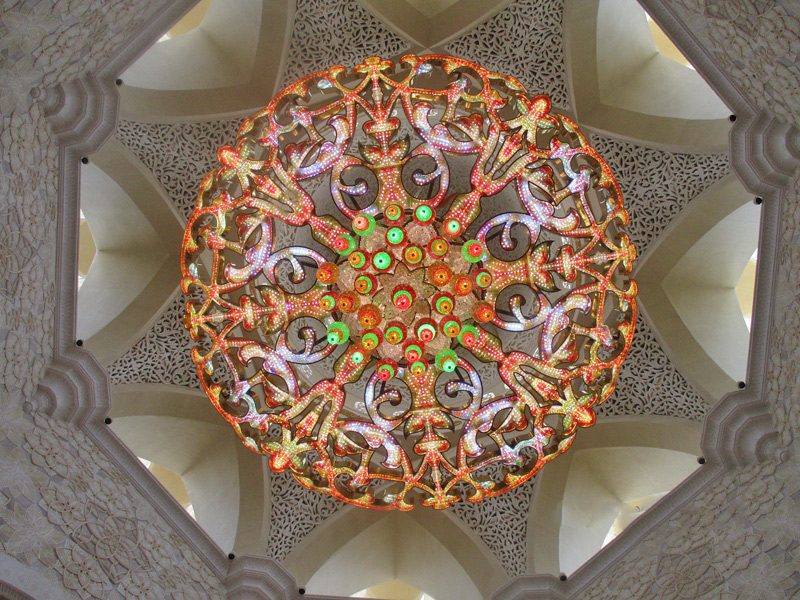
The main prayer hall is dominated by one of the world’s largest chandeliers –10 meters in diameter, 15 meters in height and weighing twelve tonnes.
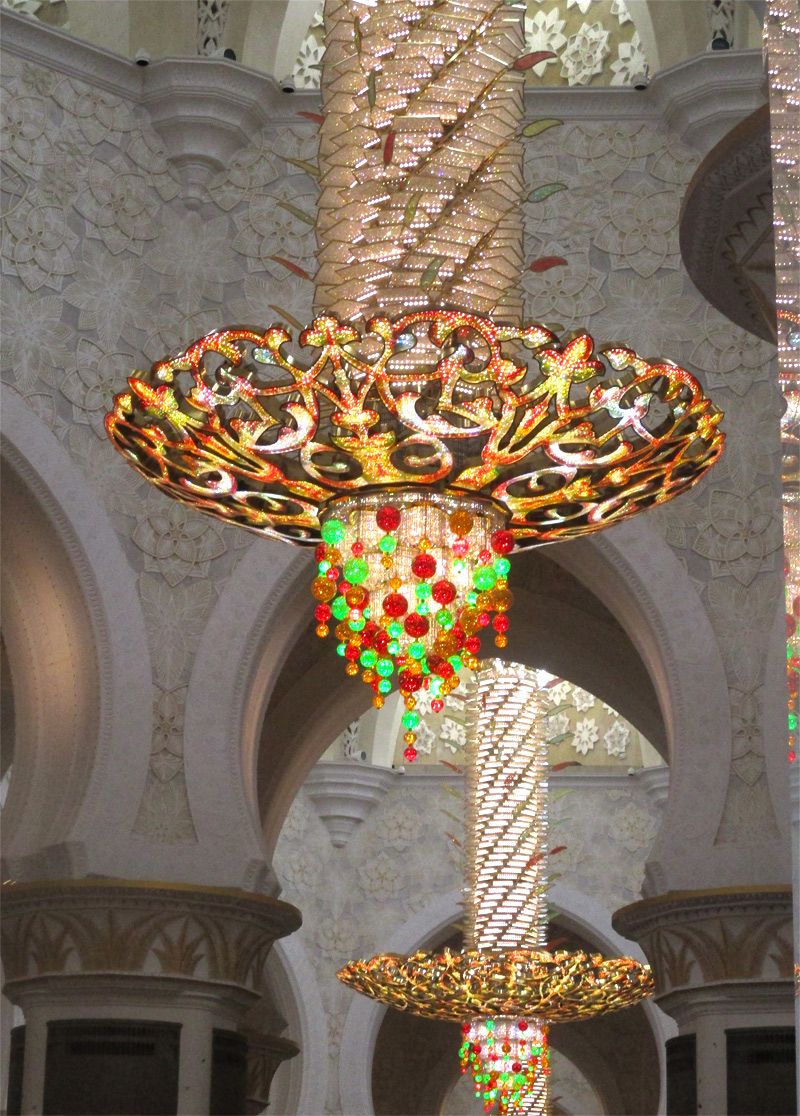
Another beautiful feature was the use of Arabic fonts. Each of the 82 domes had a few verses of the quran written in a unique Arabic font, the fonts and the verses differed from one dome to the next
One last picture before I get to today’s recipe. These beautiful blue floral decorations were present on every water fountain.I just loved the blue flowers with the green and white marble 🙂
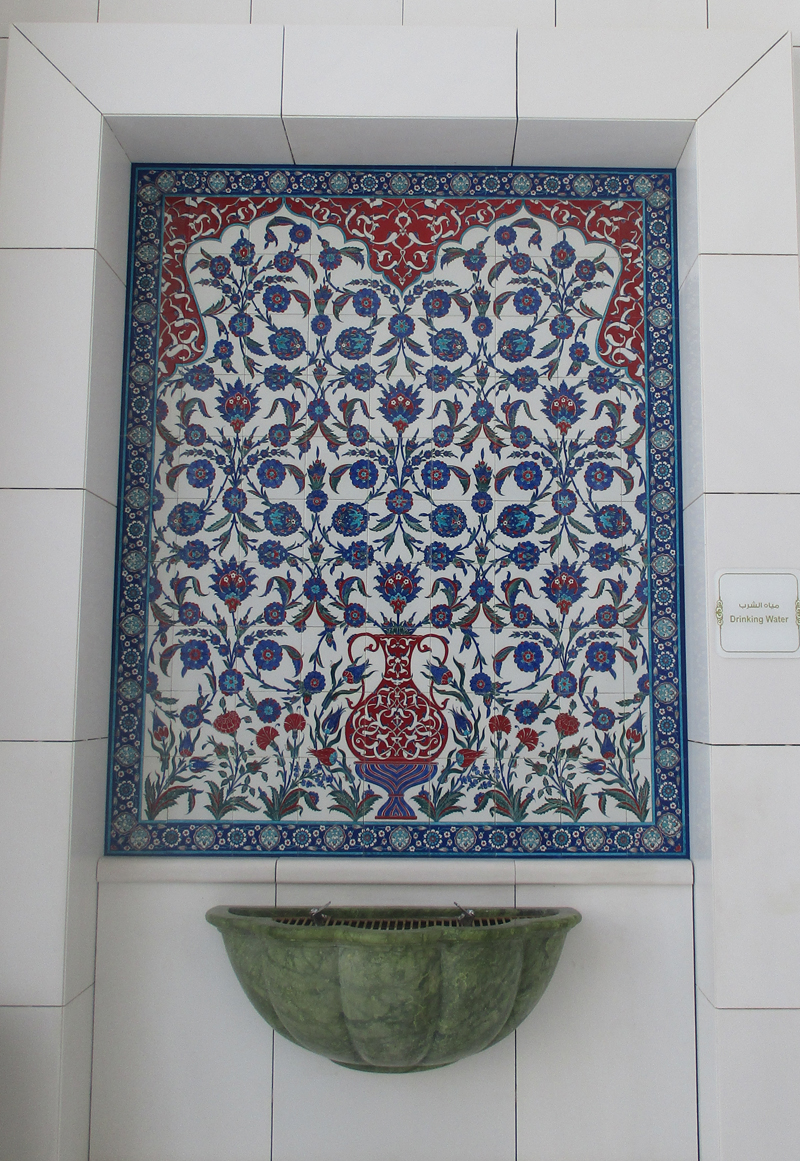
I know that you hate me when I share such long stories before getting to the recipe lol but I love sharing a little of my expat adventure with you and I do hope that you enjoy it too.
I have included a printable recipe format because many of you wrote to me asking for an option to print the recipe only when it is associated with a long post. I hope this helps 🙂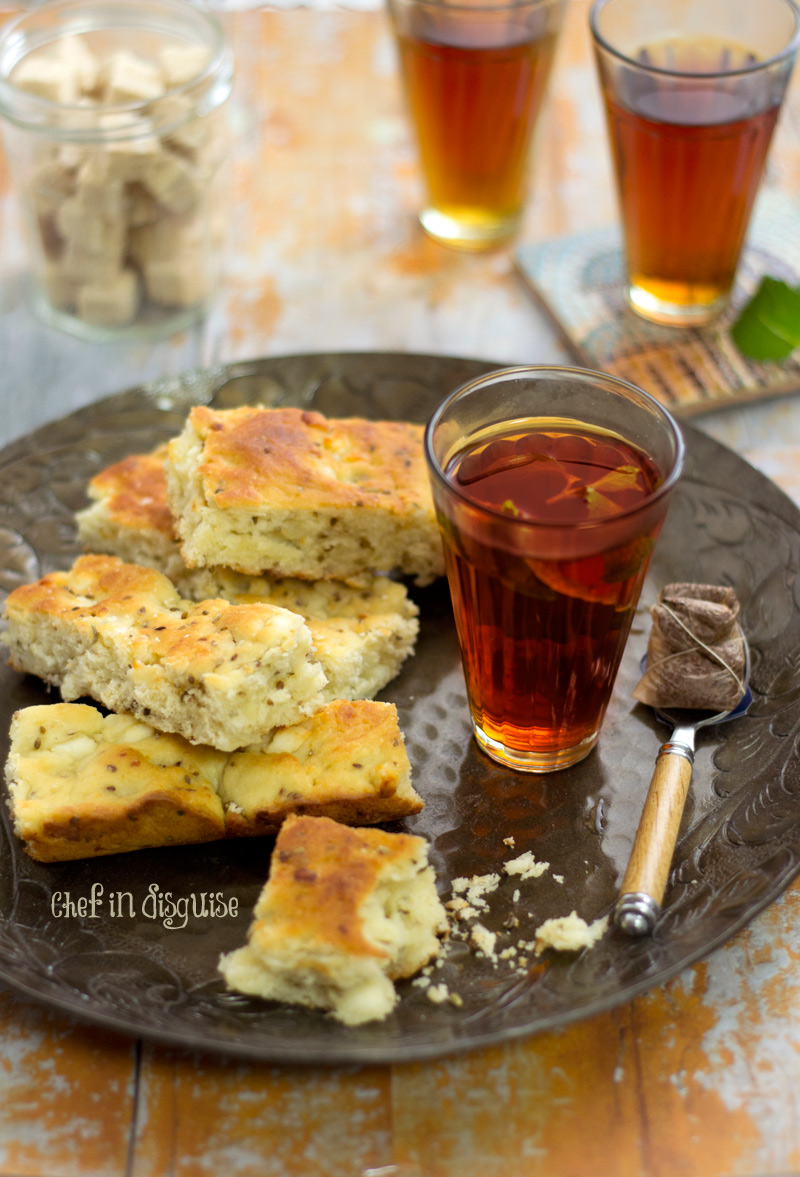
My mum’s Nabulsi cheese and seeds bread
•4 cups all purpose flour
•1 tablespoon sugar
•1 tablespoon yeast
•1 to 1.5 cups warm water
•1 cup powdered milk
•2/3 cup olive oil
•2 cups nabulsi cheese cut into cubes
•3 tablespoons anise seeds
•1 tablespoon fennel seeds
•/2 teaspoon ground mastic
•1/2 teaspoon ground mahlab
1. Activate the yeast by mixing it with the sugar and 1 cup of the warm water, leave it for 10 minutes. It should become bubbly and foamy
2. In a bowl or in your stand mixer using the hook attachment, mix the flour , milk powder and olive oil until the flour absorbs the oil completely
3. Add the cheese , seeds , mastic and mahlab
4. Add the yeast water and start kneading
5. Slowly add the remaining water and knead till you get a smooth dough
6. Cover the dough and leave it in a warm place till it doubles in size
7. Punch the dough down and gently spread it on a baking sheet lined with parchment or brushed with oil. Allow it to rest for 10 minutes
8. Bake in a preheated oven at 200 C on the central rack for 15 minutes or until the edges are golden
9. Place under the broiler for 2 minutes till the top is golden
Notes:
Nabulsi cheese is a type of white firm brined cheese popular in Palestine, Jordan, Syria and Lebanon. If you can’t find it you can use any firm brined cheese you have available
Palestinian ftoot bread

Palestinian traditional bread featuring Nabulsi cheese , seeds and olive oil, a great companion to a cup of tea in the evening, it also makes a wonderful lunch box option.
Credit:Sawsan Abu Farha (Chef in disguise)
Ingredients
•4 cups all purpose flour
•1 tablespoon sugar
•1 tablespoon yeast
•1 to 1.5 cups warm water
•1 cup powdered milk
•2/3 cup olive oil
•2 cups nabulsi cheese cut into cubes
•3 tablespoons anise seeds
•1 tablespoon fennel seeds
•/2 teaspoon ground mastic
•1/2 teaspoon ground mahlab
Directions
- Activate the yeast by mixing it with the sugar and 1 cup of the warm water, leave it for 10 minutes. It should become bubbly and foamy
- In a bowl or in your stand mixer using the hook attachment, mix the flour , milk powder and olive oil until the flour absorbs the oil completely
- Add the cheese , seeds , mastic and mahlab
- Add the yeast water and start kneading
- Slowly add the remaining water and knead till you get a smooth dough
- Cover the dough and leave it in a warm place till it doubles in size
- Punch the dough down and gently spread it on a baking sheet lined with parchment or brushed with oil. Allow it to rest for 10 minutes
- Bake in a preheated oven at 200 C on the central rack for 15 minutes or until the edges are golden
- Place under the broiler for 2 minutes till the top is golden








